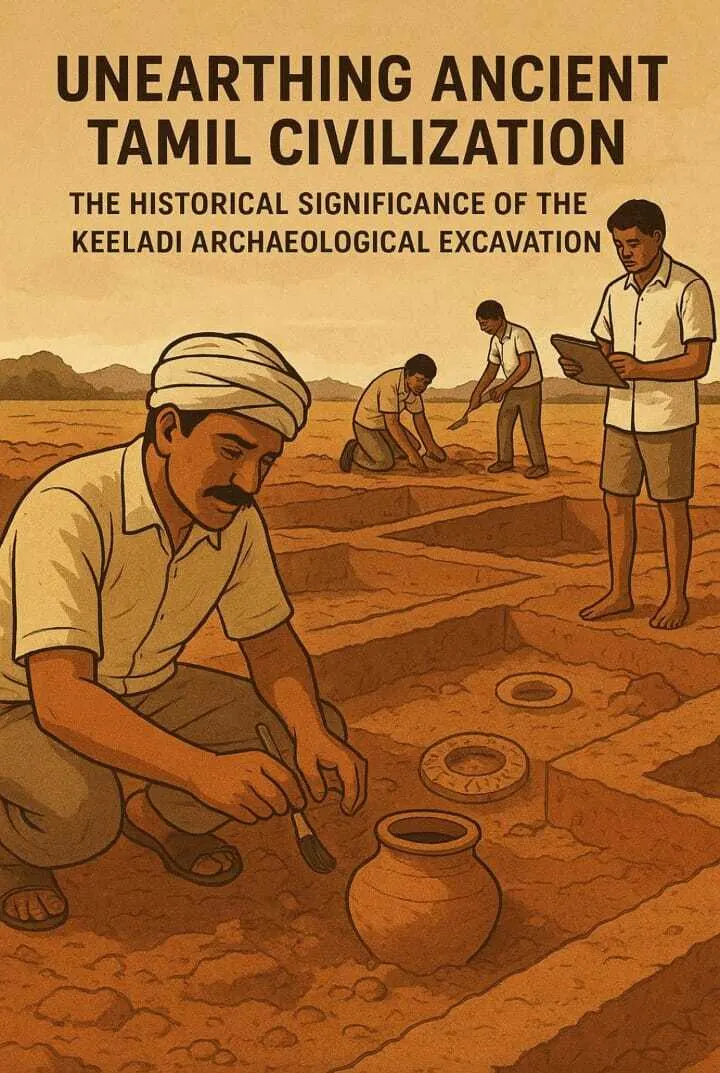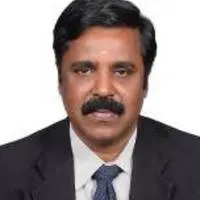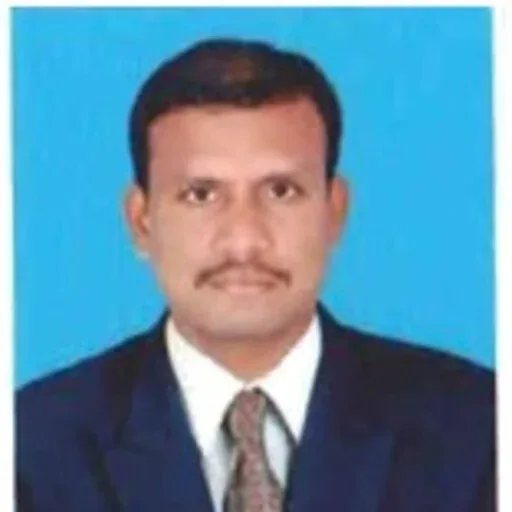| Title | Unearthing Ancient Tamil Civilization: The Historical Significance of the Keeladi Archaeological Excavation |
|---|---|
| Authors | Dr .AR .Saravanakumar, Kirthick Krishnamoorthy, G. Paranthaman |
| Category | Articles about Keezhadi excavation |
| Number of Pages | 3 |
| ISSN | 2583-7672 (Online) |
| Volume | 1 Issue-1V |
| Language | English |
| File Size | 295. KB |
| File Type | |
| Country of Publication | India |
| Main Topics | Introduction, Discovery, Importance and Historical Significance, The Keeladi Civilization: Its Importance , Trading and Connectivity, Cultural and Social Perspectives, Urban Planning and Architecture, Pottery and artifacts, Script and Language, Cultural and Religious Practices, Archaeological Significance, Conclusion |
Summary Note of this Document
"Unearthing Ancient Tamil Civilization: The Historical Significance of the Keeladi Archaeological Excavation"
The piece “Unearthing Ancient Tamil Civilization: The Historical Significance of the Keeladi Archaeological Excavation” that came out in 2023 is an academic publication of the scholars Dr. AR. Saravanakumar, Dr. K. Krishnamoorthy, and Dr. G. Paranthaman from Alagappa University. The ISRG Journal of Arts, Humanities, and Social Sciences has featured it as a paper that describes the process of unearthing the archaeological site at Keeladi, which is a small village situated on the banks of the Vaigai River in Sivagangai District, Tamil Nadu, India, and its connection with the new thoughts of ancient Tamil civilization especially the Sangam period (roughly 3rd century BCE to 4th century CE).
Key Discovery and Excavation Timeline
First Discovery (2015)
The farmers accidentally discovered some antiquities such as pottery and beads during their construction work. As a result, two more excavations under the Archaeological Survey of India (ASI), led by K. Amarnath Ramakrishna, with another phase by Dr. R. Sivanandam in 2018–2019 are reported have been conducted officially.
Decisions for Further Work
Discoveries of the excavation include the unearthing of an urban settlement. This finding challenges the earlier notions that ancient South India was mostly rural and less developed as compared to the northern regions.

|
Historical and Cultural Significance
City Planning with Elegance
The site was built with noble city planning which included paved streets, brick houses with tiled roofs, efficient drainage systems, and multi-room buildings as clear evidence of the planning and engineering skills of the society at that time. Thus, it points to the existence of a very advanced civilization in the Vaigai River basin that could have been either preceding or contemporary with the northern Indian urban centers such as the Indus Valley.
Connecting to the Sangam Era
The Keeladi site is a bridge between the megalithic period and the Sangam era, for it is the very literature/corpus of the Tamil Sangam writings (poems and epics) in the form of texts. It overturns the notion of South India's cultural isolation by assigning a site an early date (300 BCE) and thus doubts the idea of cultural isolation being a factor of the South Indian geographical region over and above that of the northern region.
Artifacts and Inscriptions
Ceramics
Black-and-red ware, terracotta figurines, and megalithic graffiti symbols have brought out the people's skill and the presence of multi-ethnic culture.
Script and Language
Besides the bricks and pottery (perhaps the earliest "Tamizhi" writing materials) inscribed with Tamil-Brahmi characters, there are very few other things to speak about the language evolution, the writing system, and social practices of the past.
Other Finds
The discovery of beads, jewelry, iron tools, clay lamps, ritual objects, Roman coins, amphorae, and West Asian pottery shows that the region enjoyed an extensive trade network with the Roman Empire, Greece, and West Asia.
Social and Cultural Aspects
The available evidence strongly points to an ancient people living with a diverse culture but advanced sanitation, agricultural practices, and the observance of religious faith through the use of figurines for example. The presence of foreign artifacts is indicative of the global connectivity and economic affluence of the region.
Broader Implications
Rewriting Histories
The discoveries have proven wrong the previously held conception according to which urban civilization in India was confined to the river valleys of the north (e.g., Ganges, Indus). Thus, it suggests an independent and mature South Indian urban culture.
Conservation and Future Research
Today, this site invites us to continue caring for our cultural heritage. If studies continue here, more light could be shed on the past of Tamil Nadu, its ancient trade, and its links with other civilizations of the period.
Acknowledgment
Alagappa University's RUSA 2.0 (MHRD, India) provided the necessary support.
Conclusion
The article wraps up by noting that the understandings that Keeladi extends are "a window into the past," capacity for enriching the recognition of ancient India's societies as interconnected and for implication in conservation efforts of the heritage for posterity. It further comprises of 8 references for additional reading on related excavations and Tamil history. The document length is 4 pages, and as of today, it has no citations but has been accessed more than 2,000 times.

